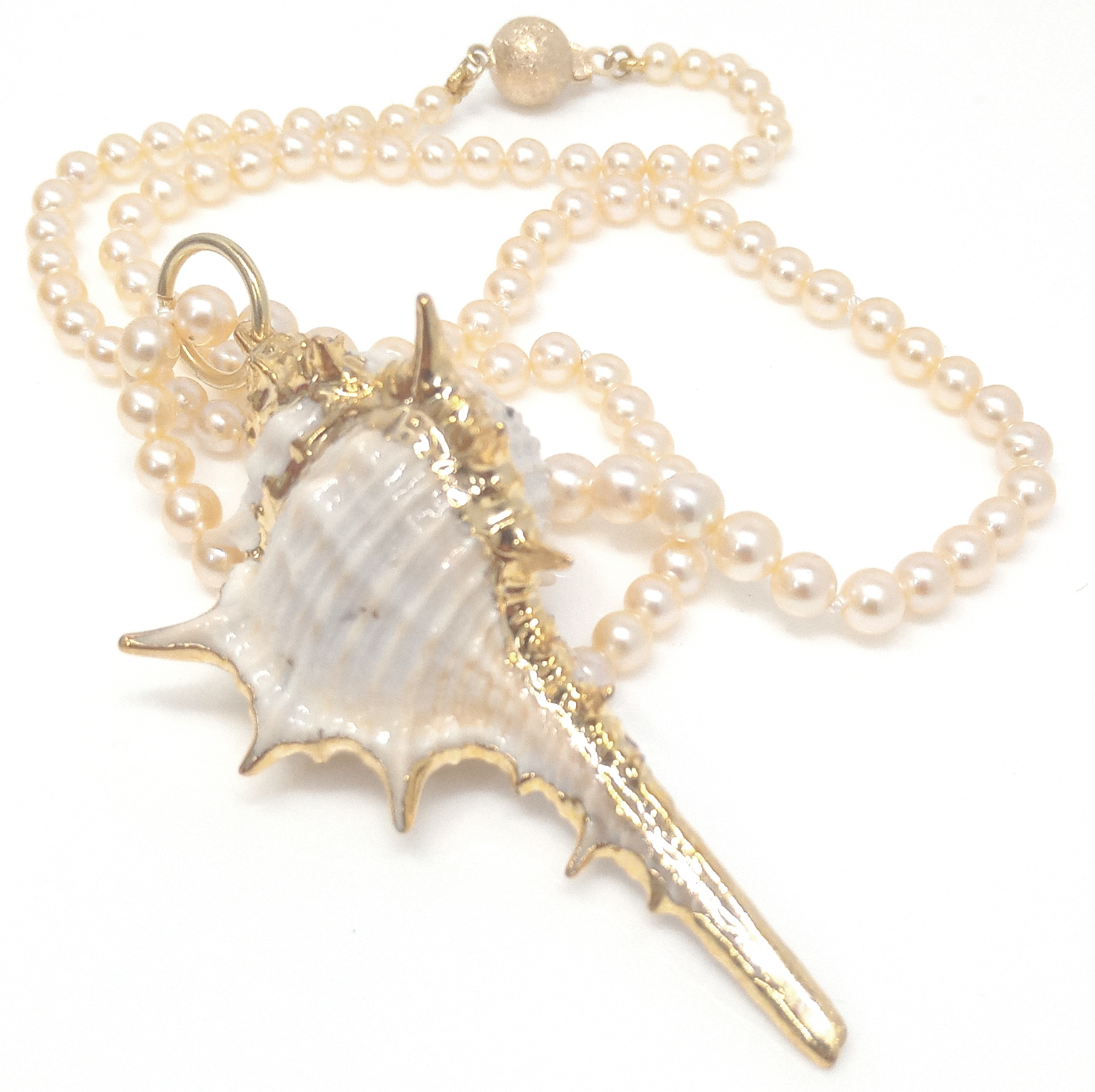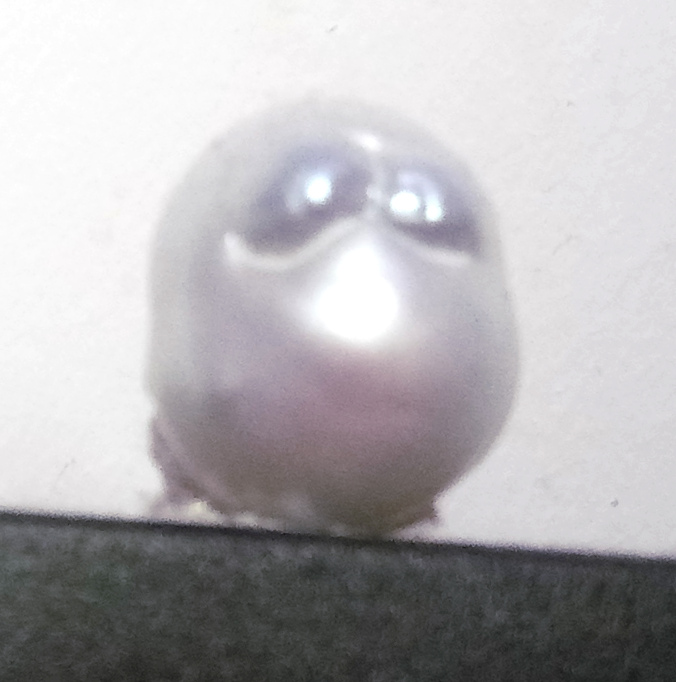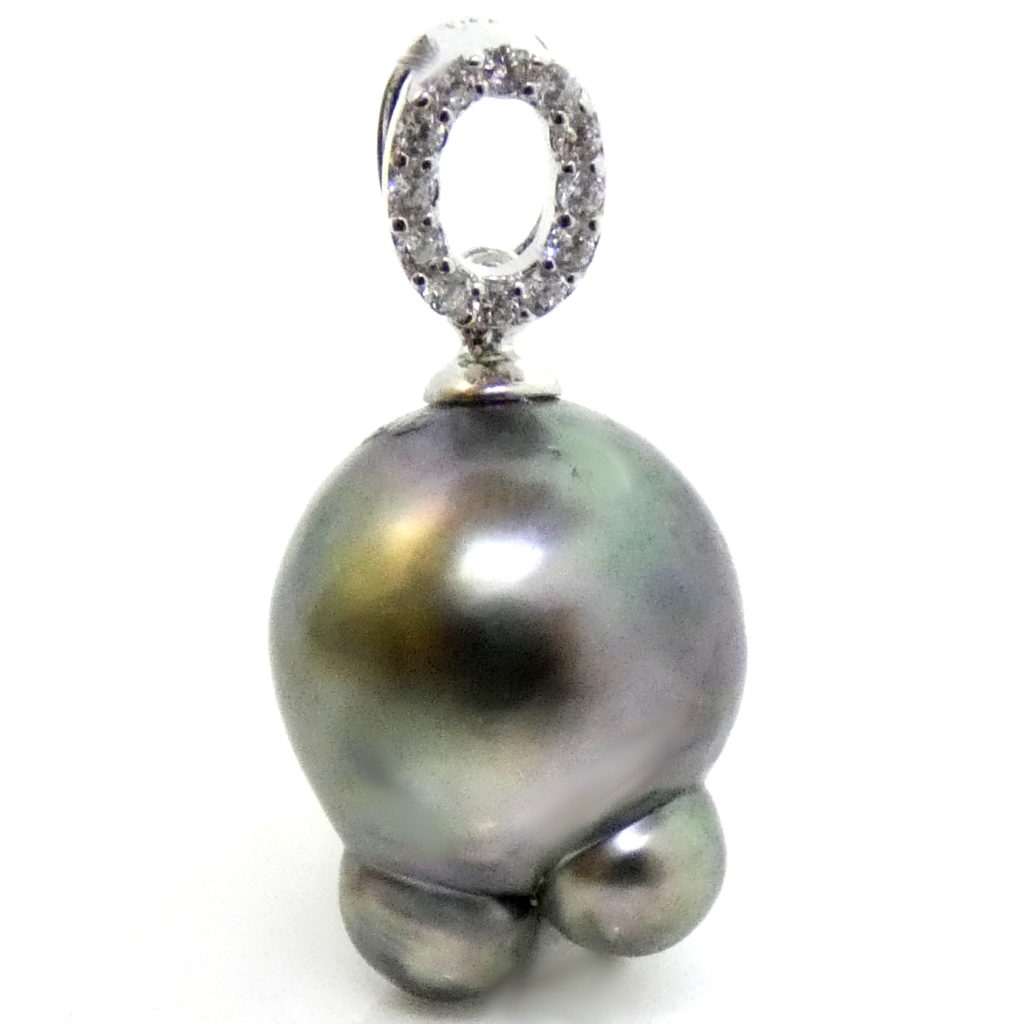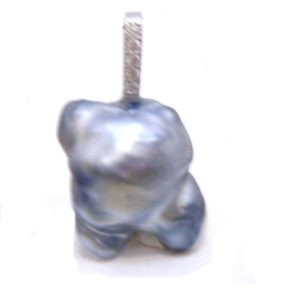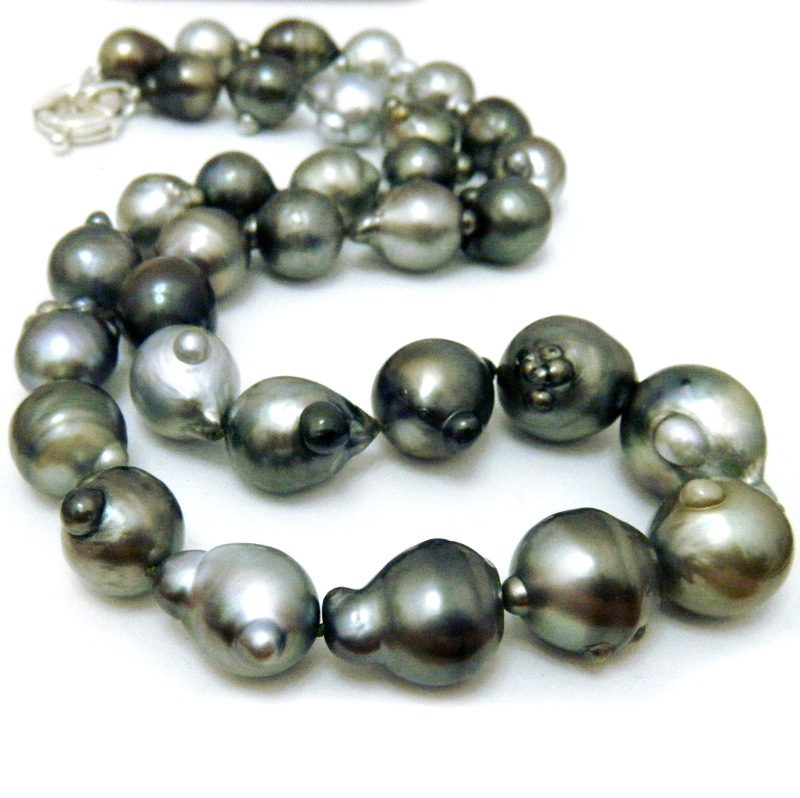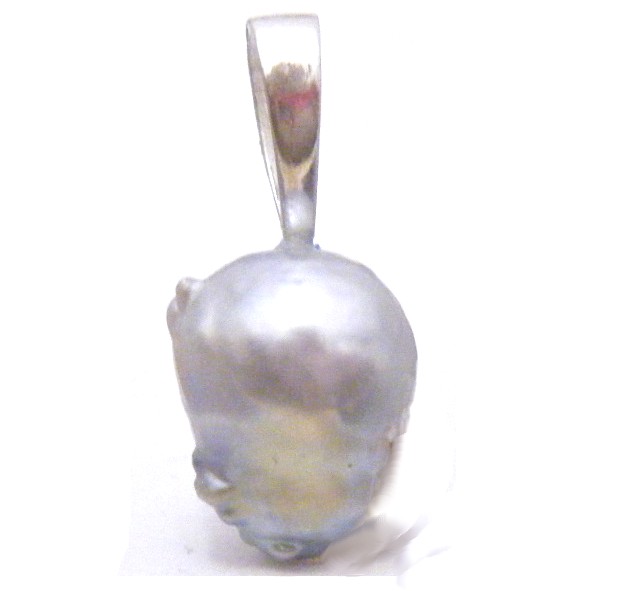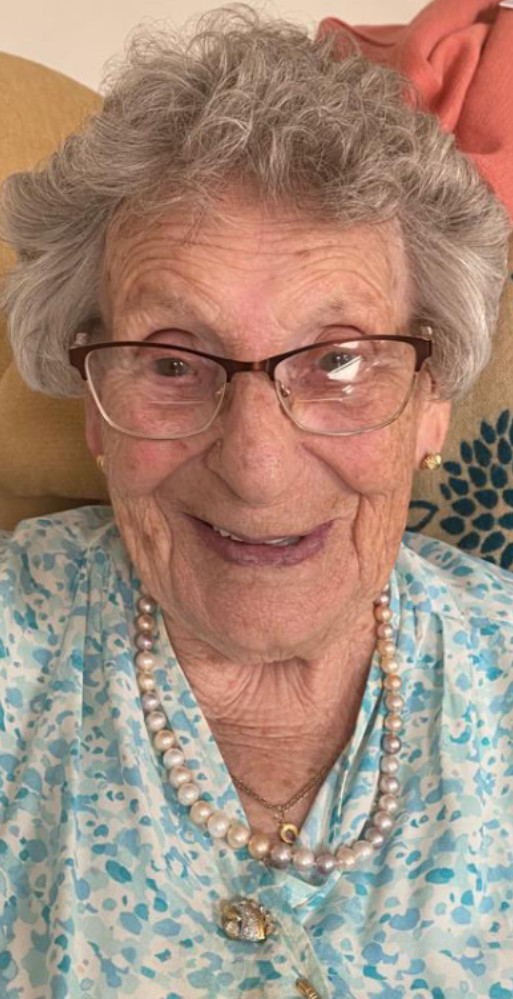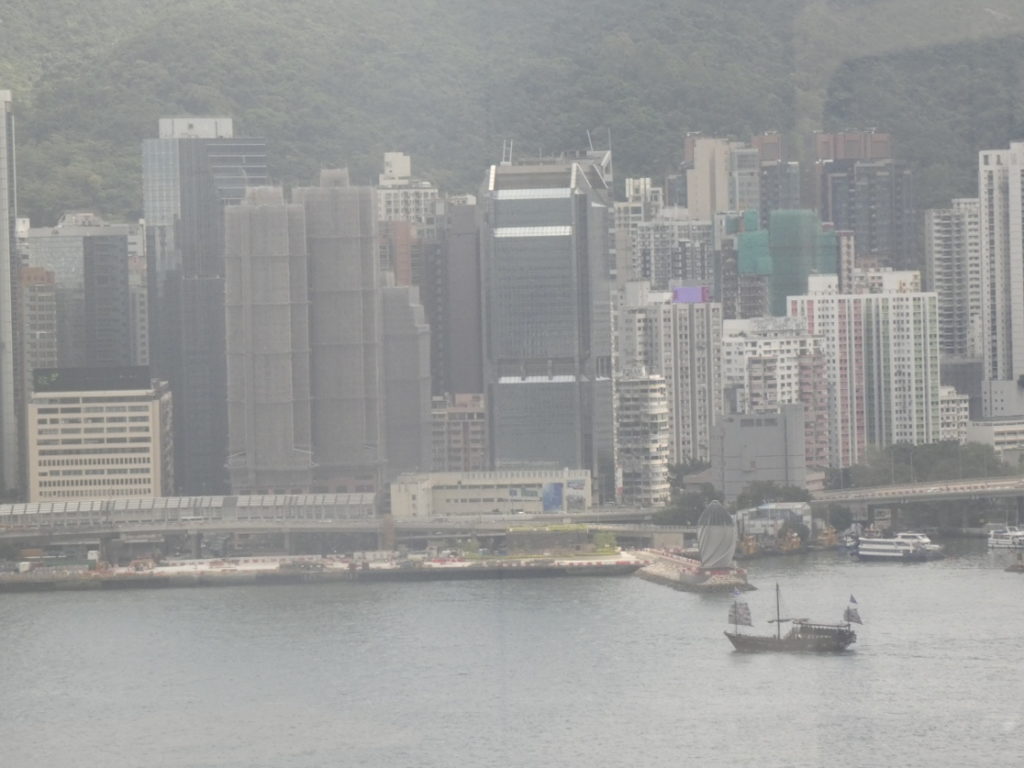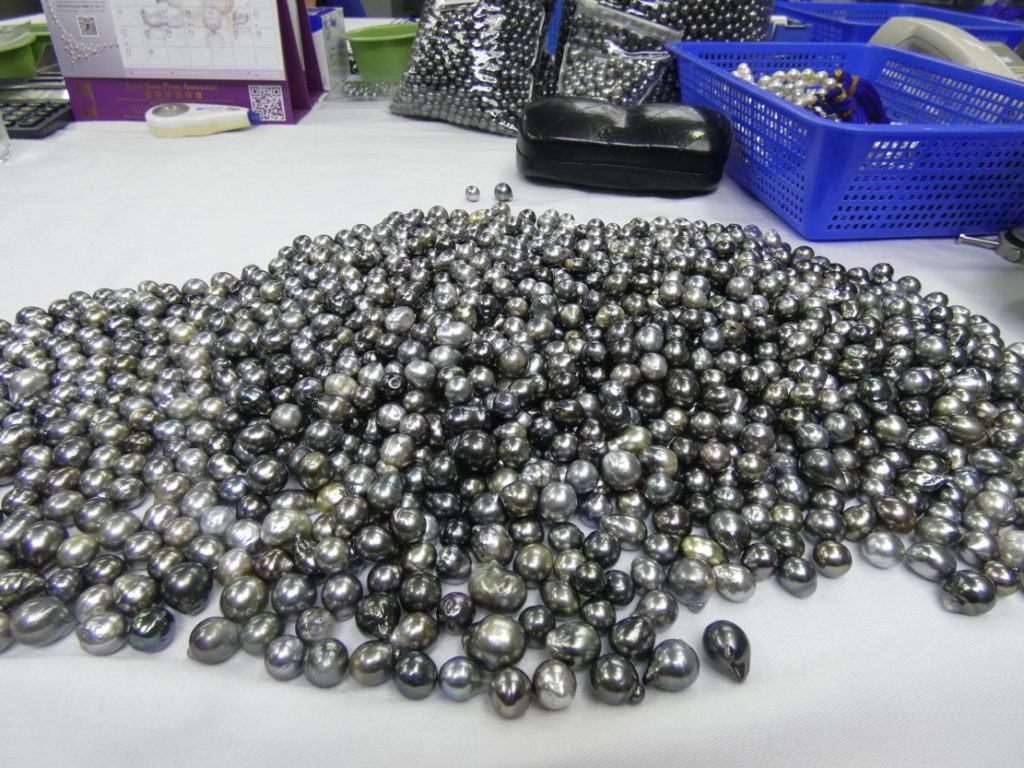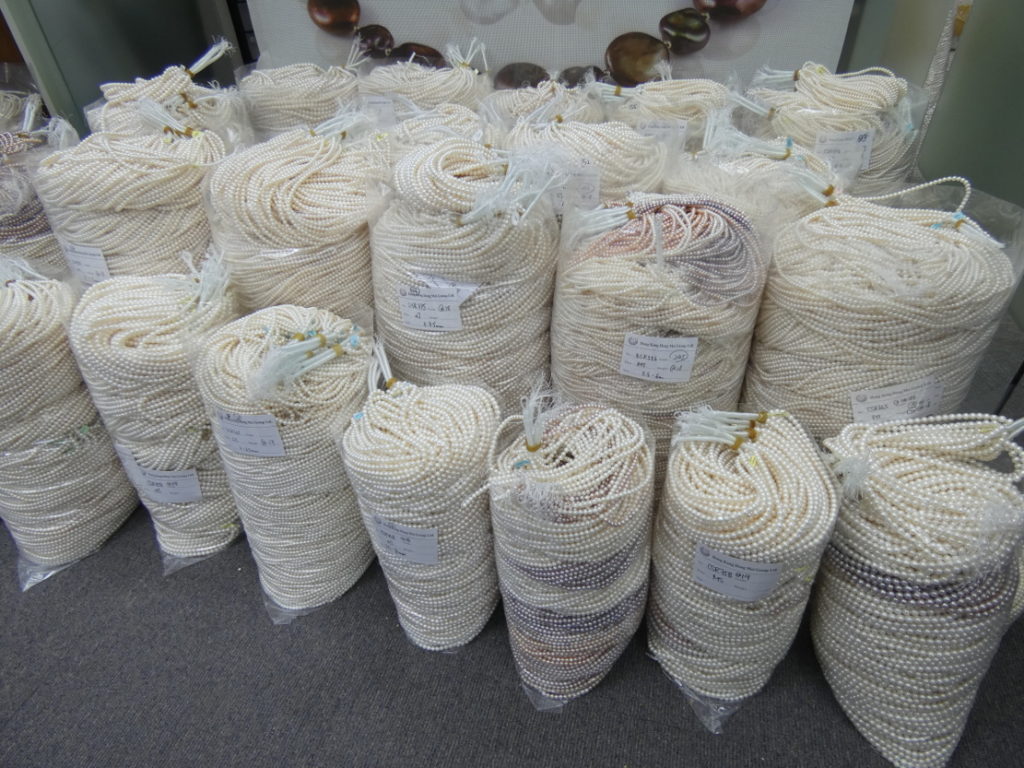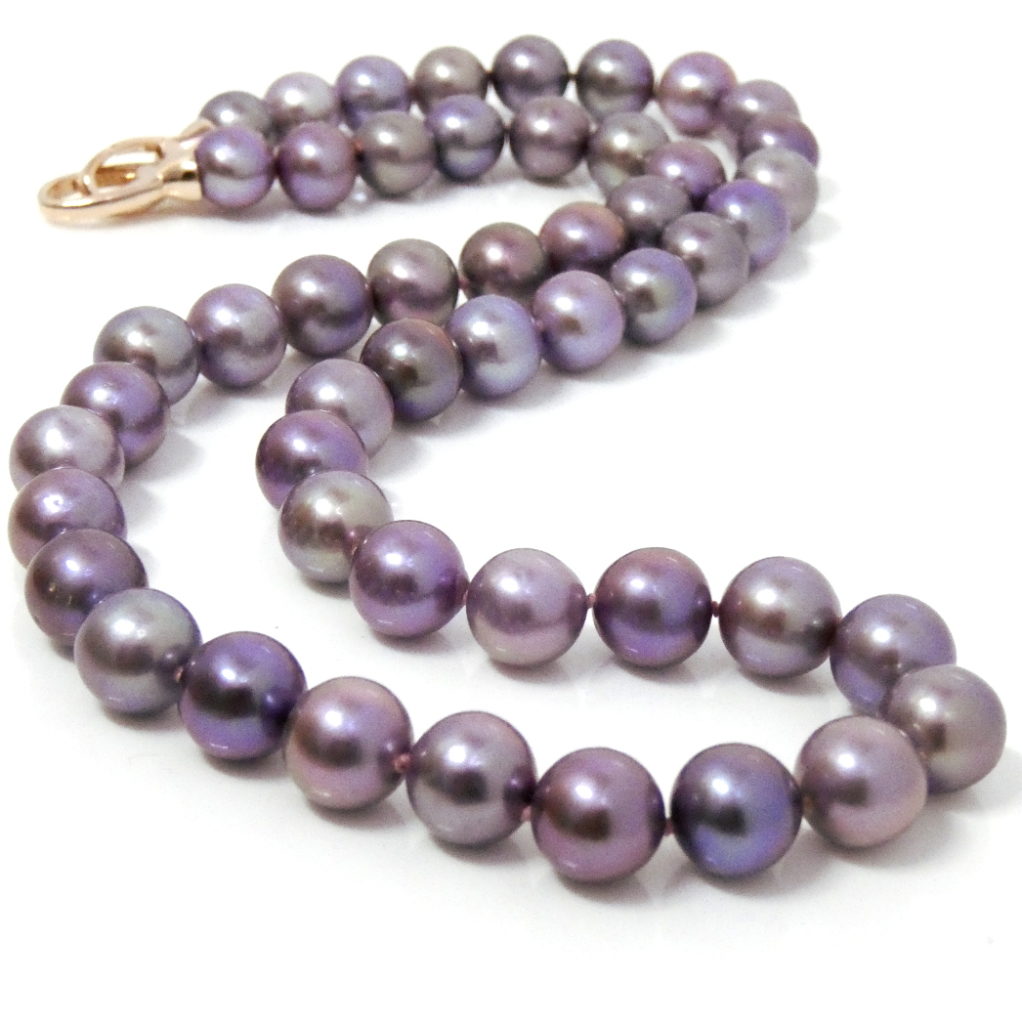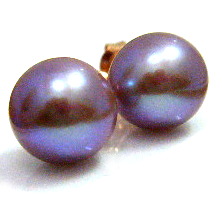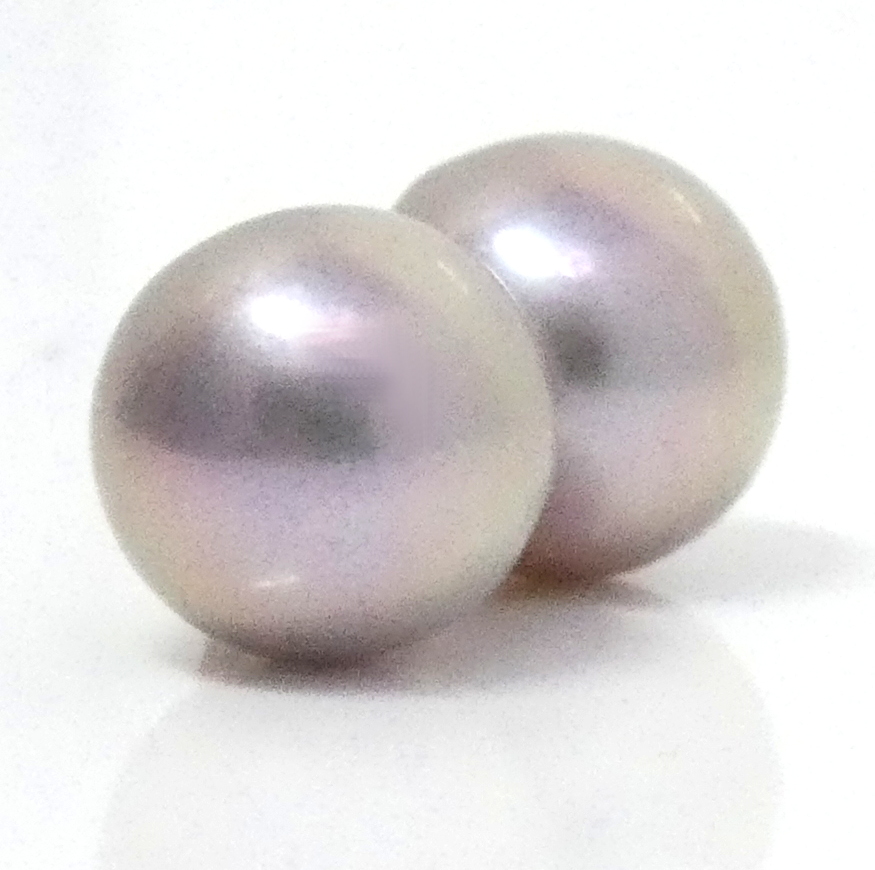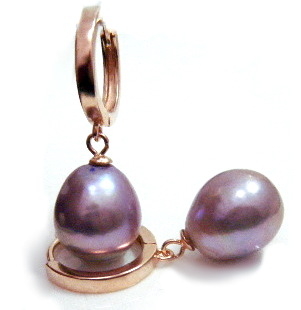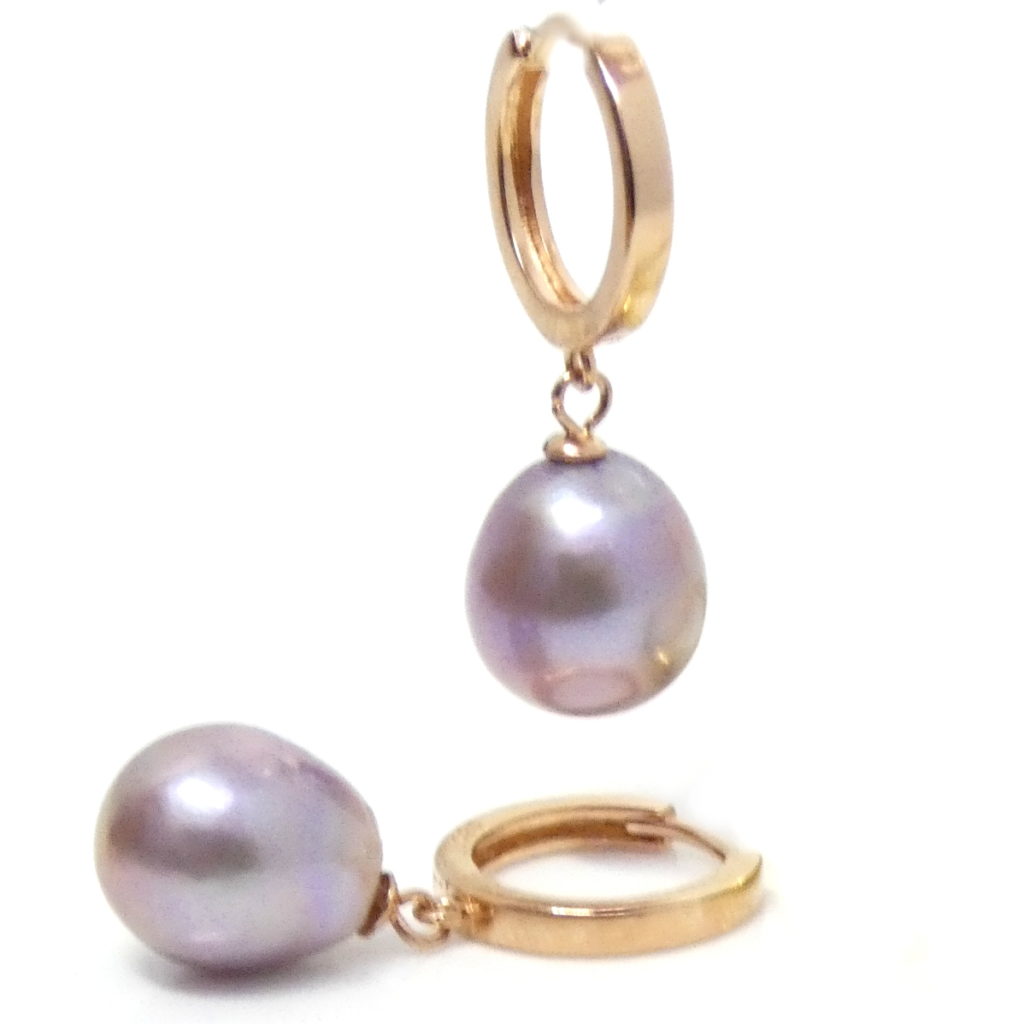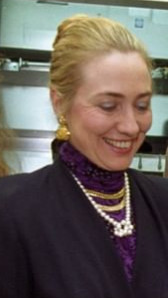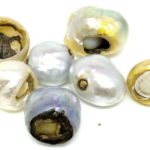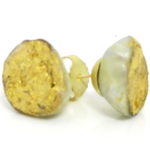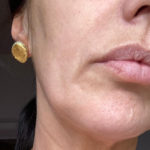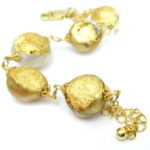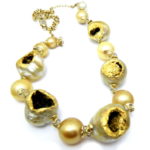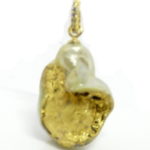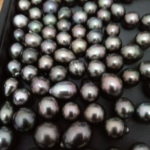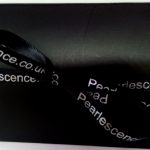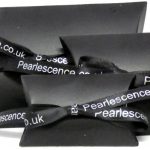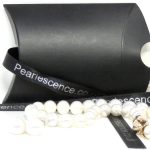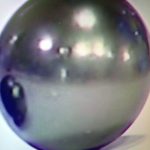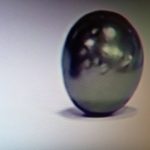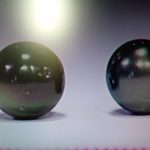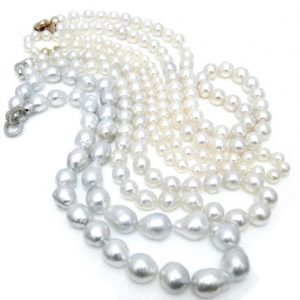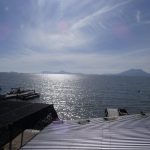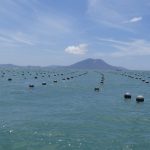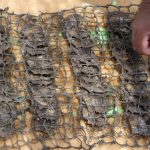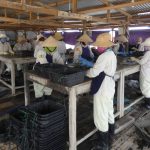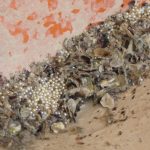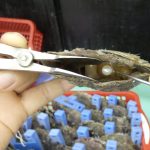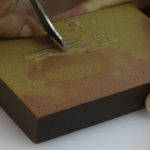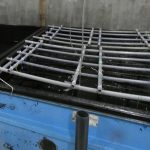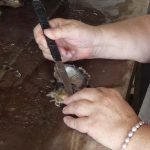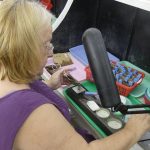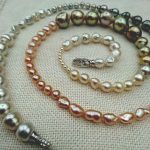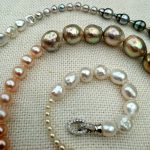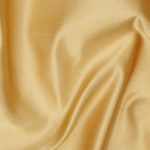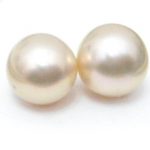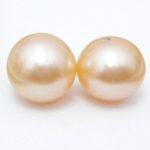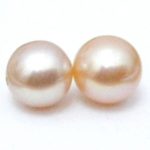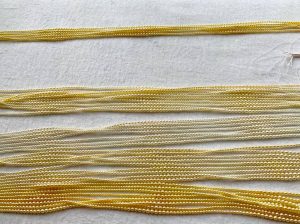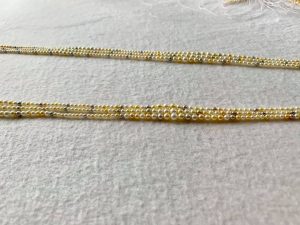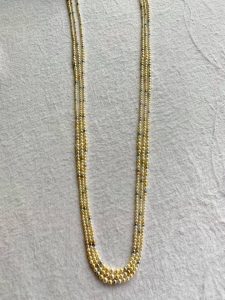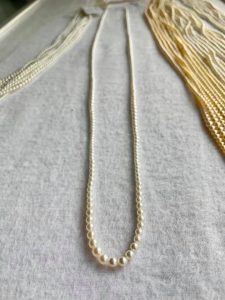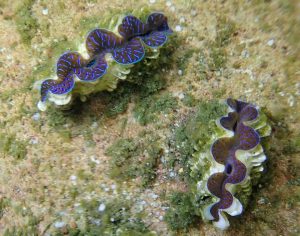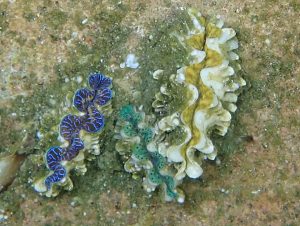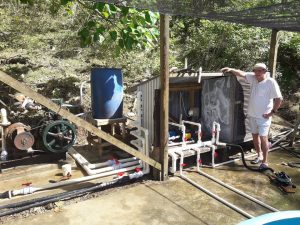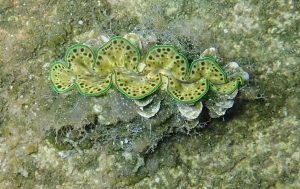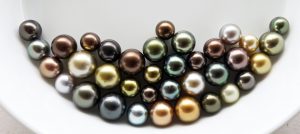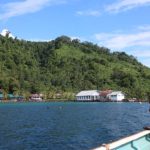Carat
Classic term to identify the amount of gold in metal. Different metals are added to gold to harden it and make it more durable. Expressed as a fraction of 24 parts so that 24ct is fine gold or pure gold, down to the lowest standard which is 9ct in the UK, usually 14ct elsewhere.
Circle pearls
No one knows exactly why some pearls develop circles. These can be bands of colour or grooves, as the pearl has gently spun on its axis in the pearl sac. While circle pearls tend not to be the most expensive they are not as yet imitated and have stunning variety .

These Sea of Cortez drops show circles, both as grooves and in bands of colour
Colour.
Natural freshwater pearls tend to be shades of white through to pale pinks and peaches and golds The intensity of the colour depends on the species and strain of host mollusc plus the farm water and food.
Colour Treatments
Many pearls are coloured treated as part of the processing between farm and retailer. There is however, now a trend towards completely natural colour untreated pearls.
Freshwater treatments
Grey – Silver nitrate and gamma radiation
Black – dyed. A good dye process will bring out a range of colours and even peacock effects Over dying will produce a heavy black monochrome. Beware of ‘tahitian black’ colour pearls which are freshwater pearls dyed to imitate Tahitian pears. Tahitian black pearls are common on auction sites
Gold Bead nucleated pearl producers are trying to emulate the deep gold of south sea pearls to produce huge valuable pearls at great prices. They are close but the colour isn’t quite right yet. Be suspicious if the pearls are too cheap for what they appear to be.
Bright deep colours – various dyes can be used to colour pearls the same as fabrics
Akoya.
Most akoya white pearls will have been bleached, although natural white akoya can be found. White bleached akoya pearls are often ‘pinked’ – delicate tinted to a faint pink overtone which softens the colour and is supposedly more flattering and desirable.
Black -dyed
Gold- often dyed to a deep gold which resembles gold south seas. Natural gold akoya are a much softer and paler colour
South Sea
Gold pearls are often dyed to enrich the colour to the most valuable deep gold. One strand generally looks fine on its own but in a hank the dye becomes more obvious. Always ask about dye and a reputable seller will not mind and will know.
Coin
Usually a round flat pearl shaped like a coin, also used to describe fancy hearts, squares, lozenge and other shaped pearls
Conch Pearls
Rarest of the natural pearls, conch pearls look a bit like jelly beans. They are not nacreous but have a distinctive flame pattern on the surface. The colours range from orange, through yellow to pink

Conch pearls
Cook Island Pearls
Specific group of south sea islands which produce their own distinctive pearls from Pinctada Margaritifera. The pearls show the same colours as Tahitian pearls but are softer looking in shades, while also being more grey/black than green

necklace of Cook Island pearls.
Cortez Pearls
Very rare pearls produced by one farm in the Sea of Cortez, Mexico, from Pteria sterna, the rainbow lipped oyster. (the indigenous pearl oyster). These pearls fluoresce red under UV light. The pearl colour default is a light silvery grey but, true to their name, Cortez pearls can show a rainbow of colour, including a strong mid-blue. The farm has been operating since 2004 so the total number of pearls is very small so the price is correspondingly very high.

Rainbow colours from Perlas del Mar.
Cross
Cross can be diagonal or crucifix. Some cross pearls which also have nacre between the limbs have been sold as ‘butterfly’ pearls


Peach cross pearls Butterfly pearls
Cristaria plicata
The cockscomb pearl mussel was the mollusc originally used by the Chinese when they started to culture freshwater pearls. The pearls produced are known as rice crispie pearls because of their resemblance to the cereal
Cultured
Cultured is really just a jewellery trade word for farmed. It is any pearl formed after a human puts a bead nucleus with mantle tissue or just mantle tissue into a mollusc. Any farmed pearl is cultured. Any real pearl feels faintly gritty when rubbed gently on your teeth (faintly gritty, not filing your teeth down abrasive) and the drill hole tends to be very small (usually 0.7mm) (because pearls are still sold by weight at wholesale) (Natural pearls are pearls made by nature on its own, with no human activity at all -See separate entry)
Culturing Process
Freshwater
In freshwater mussels, insertion of only mantle tissue is enough to trigger the making of a pearl sac and therefore pearl production. It used to be that beads were usually not used. However the last five years have seen the development of bead nucleation in freshwater pearls, producing second or third graft round pearls of stunning colour, lustre and shape. High quality bead nuked pearls are still exceptional and unusual and therefore very expensive, but can be up to 20mm.
Even larger pearls are being produced with pearls nucleated with a compound which expands as it absorbs water and thereby stretches the pearl sac. These pearls, third graft, often have stunning lustre. When drilled the compound is cleaned out. The pearls are called soufflé pearls because the are hollow and lightweight for size so far.

Huge 20mm natural blue soufflé pearl.
When drilled the mud is drained away so that the pearl is hollow and light in weight.
(The name was given to them by veteran pearl dealer Jack Lynch of Sea Hunt Pearls) However most freshwater cultured pearls are still solid pearl nacre, even pearls up to 15mm. This means that they are arguably more durable but the chances of perfect round shapes are much lower

metallic white tissue nucleated freshwater pearls
While Salt water oysters will only manage to make one pearl each (which keeps up their scarcity and value) freshwater mussels are more obliging and will make 20 or more each, when tissue nucleated.
Some farms and companies are developing their own strains of mussel, selecting for quality, while other farms will buy in their mussels ready nucleated. This careful breeding is producing more strongly coloured natural colour pearls. After harvest in China pearls go from individual farms to pearl factories where they are bleached to be white pearls, or otherwise coloured or processed, drilled and sorted, and assembled into strands.
Saltwater
Several distinct types of pearls grow in salt waters. Farming methods are pretty much the same for all of them The process of growing sea pearls in oysters was discovered (or re-discovered as there are arguments about this) by Mikimoto in 1893. All pearls which grow in salt water start with baby oysters which are either artificially bred in a hatchery or spawn naturally then are collected by placing various lures in the water to attract the spats as they are called.

Spat
The baby oysters are grown on for two or more years until they are big enough to manage to accept a grafted bead nucleus. With all sea pearls the pearl is grown around a nucleus – a starter bead plus a tiny fragment of mantle tissue which grows to form a pearl sac around the bead. As the mantle tissue is tissue for making nacre/shell it carries on doing this, secreting nacre on the inside of the sac and onto the bead. Mantle tissue makes the pearl sac because its job normally is to secrete the mother of pearl to make the smooth and lustrous lining of the oyster’s shell. . Early in the morning of the day an oyster will receive a nucleus, it is taken out of the water and then left for about half an hour, by which time it should have opened its shell a little. The shells are wedged open. Any unopen shells go back into the water to be left for another attempt in a few days Nucleating oysters is a skilled task – even opening the shell too far can kill the delicate creature. The bead-plus-mantle tissue scrap is inserted into an incision into the body of the oyster, either at its gonad or by the connective tissue.

Inserting the bead and nucleus into the host oyster
Remarkably having a bead stuck into its sex organ seems to make the oyster more active sexually rather than less! A nucleus is a (usually) round bead made from shell and cut and polished into a smooth round -usually about 8mm in diameter for first grafting.
The oyster is secured in a clamping device in front of the operator and either the wooden wedge is left in place or a retractor which allows the shells to be forced further apart is inserted. If the oyster is opened too far it will die. The aim is for this process to take under a minute and it is reckoned that it takes a month at least for the oyster to recover. The actual process is that the grafter, working through the tiny opening between the two halves of the shell, makes n incision of about a centimetre into the oyster’s gonad or into its connective tissue then places the mantle tissue and nucleus (dipped in water and held by a suction tool) into this slit. The two insertions must be touching, or a pearl sac will not form. Then the oyster is put back into the sea. There are various ways it is held but they all work to allow the oyster to feed happily and grow. No-one knows exactly why some grafts become great pearls and others don’t. It is probably a mixture and combination of genetics, grafting skill, and growing conditions. Many farms keep a record to see who is the best grafter (!)
The implanted tissue forms a pearl sac around the nucleus and starts to secrete nacre. It will take between two and four years for the pearls to form. The tissue implant is only about 1mm square. It will form the pearl, which has no genetic relationship with the host mollusc. As long as the irritant is present the mollusc continues to add layers of nacre until a smooth lustrous pearl is formed. Only one pearl per oyster can be produced. Sometimes oysters can be re-nucleated after harvesting to produce a bigger pearl with a bigger nucleating bead, or, if no bead is used a keishi pearl can be produced (think of the inside of an inflated then deflated balloon) Oysters are fairly fussy about their conditions and if forced to open too much they will die, as they will if they are out of the water too long, get too hot or too cold, if the water in which they live becomes too saline or not saline enough (this happens when a river floods and any oysters living in the estuary may well die because of the temporary dilution of salinity.

These oysters are attached to a length of rope. Other farms use mesh or baskets
It takes about 18 months to two years to grow tahitian and south sea pearls. Tahitian pearls are required by local law to be x-rayed and have a minimum nacre depth of 0.8mm all round. South sea pearls tend to have much thicker nacre than this There is some controversy about how long akoya pearls need to stay in the water. Some are harvested after only six months but these pearls can have gaps in their nacre so the bead is visible (they are said to ‘blink’ when rolled) and they will wear out quickly. But they will, of course, be very much cheaper. The pearls are cosseted. They will be cleaned several times to remove algae, vegetable growths and barnacles, and the farmer must keep an eye on the weather conditions – some akoya farms now monitor temperature and salinity and move the oysters if conditions are not ideal.
